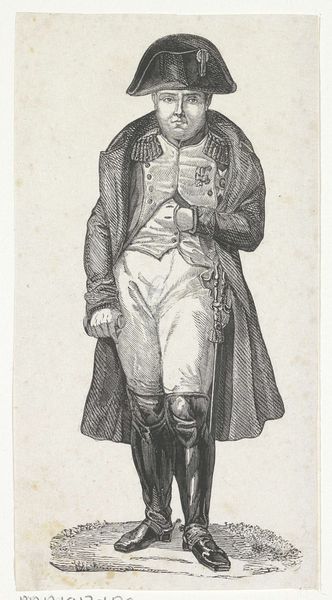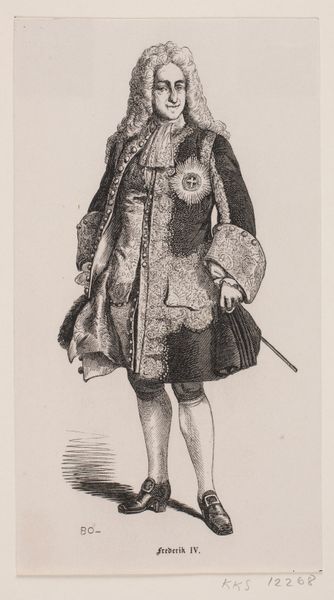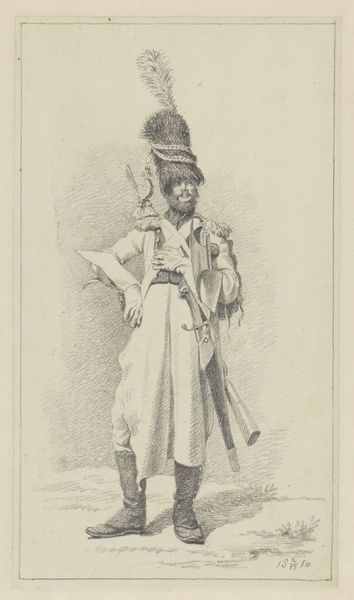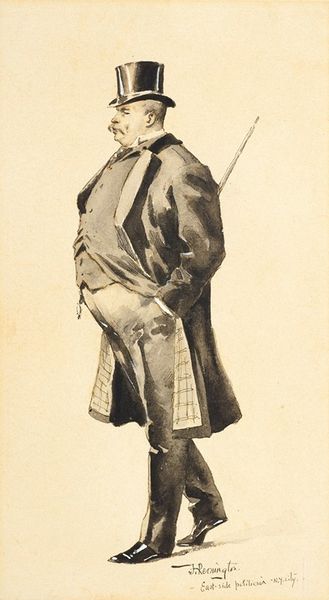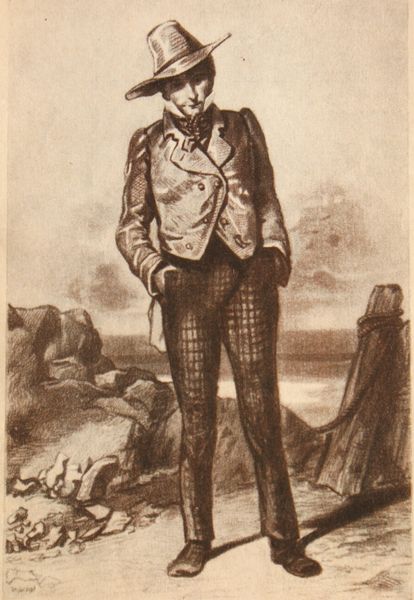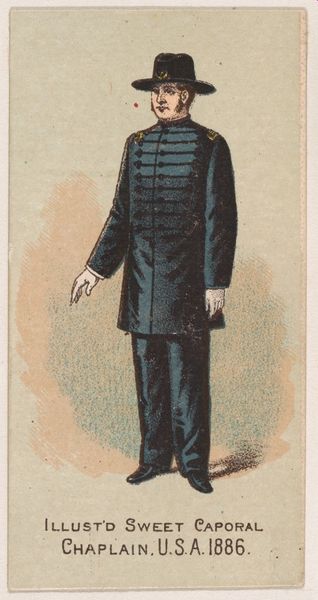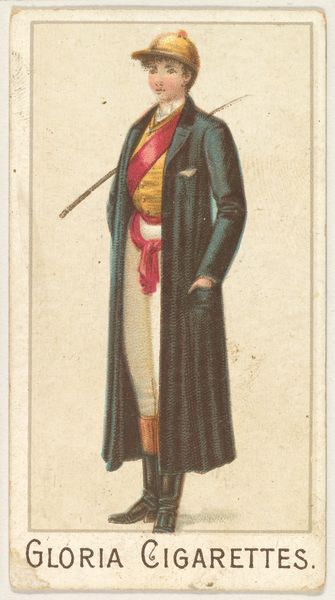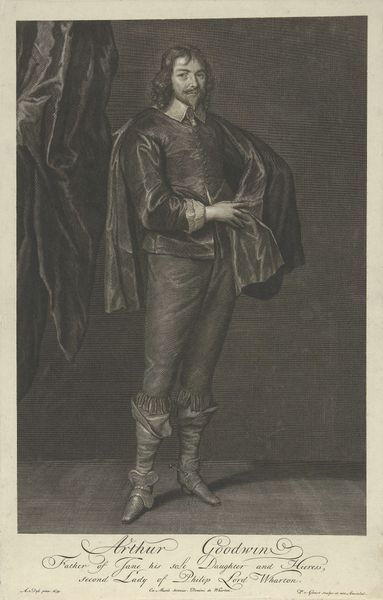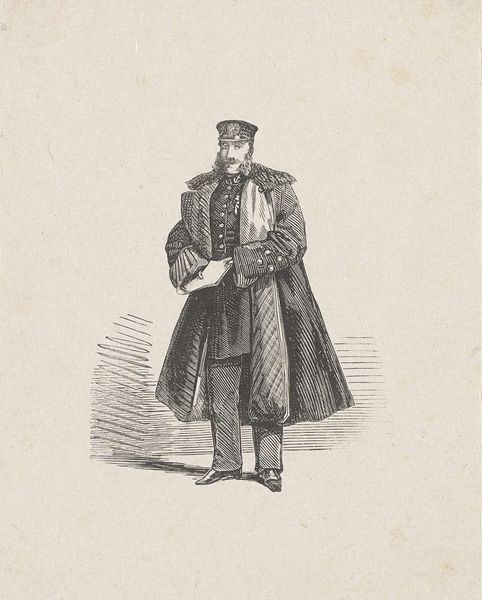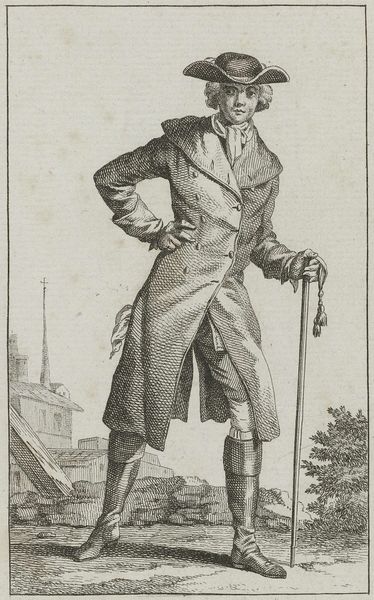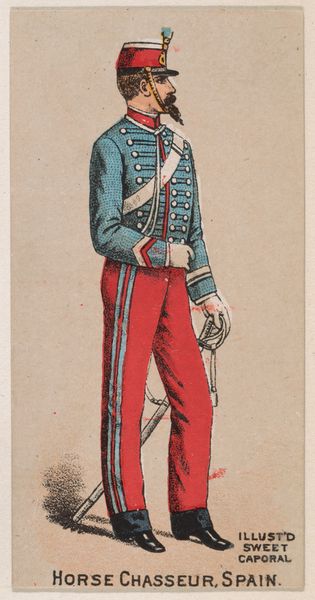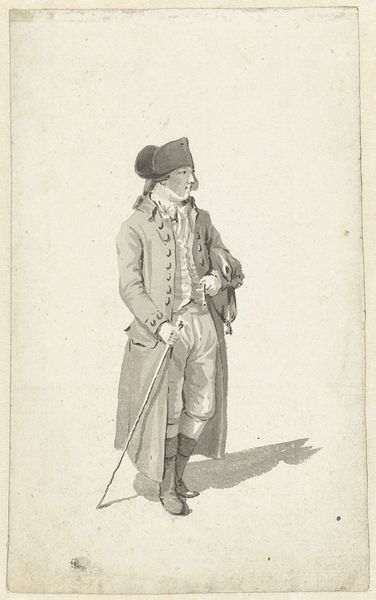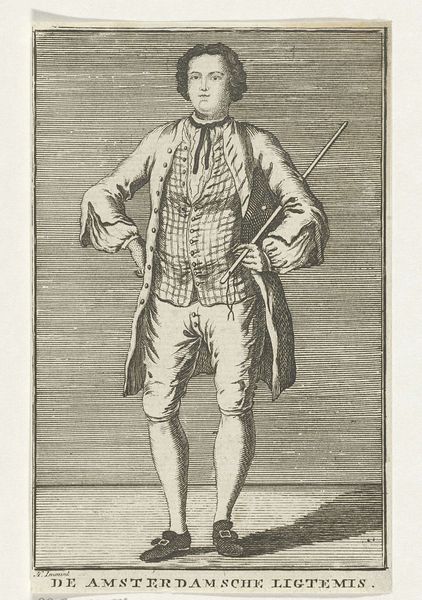
Standbeeld van Johan VI, graaf van Nassau-Dillenburg, op het Domplein te Utrecht 1883 - 1888
0:00
0:00
print, sculpture, engraving
#
statue
# print
#
old engraving style
#
portrait reference
#
sculpture
#
19th century
#
history-painting
#
engraving
Dimensions: height 168 mm, width 115 mm
Copyright: Rijks Museum: Open Domain
Editor: This is a print of the statue of Johan VI, Count of Nassau-Dillenburg, made by Auguste Tilly between 1883 and 1888. It has such a formal air to it, doesn’t it? Very… official. What do you see in this piece? Curator: I see a potent record of 19th-century methods for crafting and consuming national heroes. The print, as a reproductive technology, democratized access to this statue, initially conceived as a singular, monumental artwork of cast bronze. Consider the labor: from the sculptor shaping clay to the foundry workers smelting metal to the printmaker etching the plate, a network of labor is crucial to the production of its meaning. Editor: That’s interesting, because I didn't initially think much about the print *itself* as a thing with its own kind of production process. Curator: Exactly. And how does that production intersect with social class? Who commissioned the statue? Who purchased the print? What narratives about Johan VI were being circulated at the time, and whose interests did they serve? Notice the precision in the engraving, emulating the texture and form of the sculpture. This speaks to the status the printing house afforded the original sculpture as they sought to reproduce it for popular consumption. Editor: So it’s less about the artistic vision of a single creator and more about… Curator: A convergence of materials, techniques, and social forces. The copper, the ink, the press, the public—all are implicated in creating not just an image, but also an idea of leadership and nationhood that could be widely disseminated. This connects high art with popular craft, and invites a more critical look at how heroes are made and consumed. Editor: So much to consider when thinking about a seemingly straightforward image! It makes me wonder how we might "deconstruct" other images using these ideas about materials and labour. Curator: Precisely! Viewing art this way exposes power dynamics embedded within seemingly simple things and opens us to a richer understanding of cultural history.
Comments
No comments
Be the first to comment and join the conversation on the ultimate creative platform.
